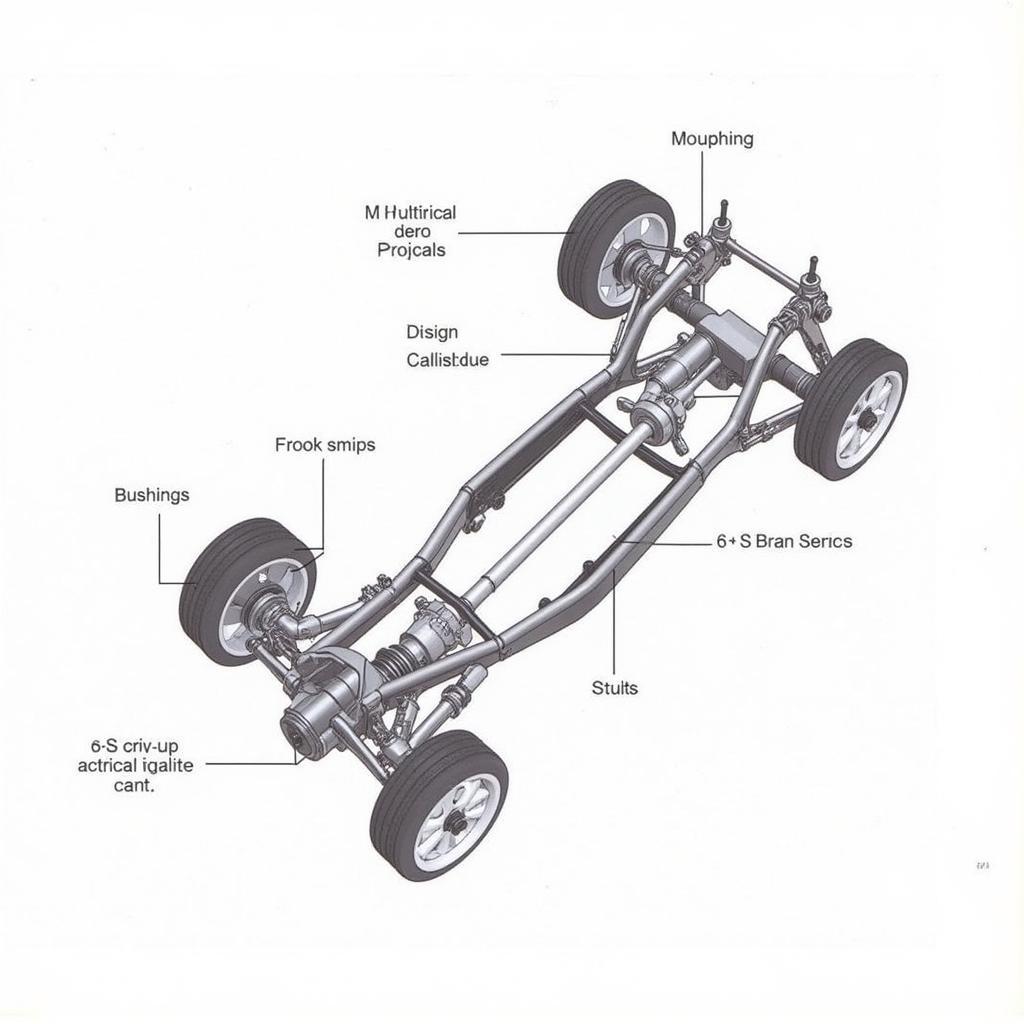You hear that telltale clunking sound every time you hit a bump. Maybe your car feels like it’s riding lower on one side. These could be signs of car suspension problems, and while it might seem daunting, the good news is that yes, car suspension can often be repaired!
 Car Suspension System Components
Car Suspension System Components
Understanding Your Car’s Suspension System
Before diving into repairs, it’s helpful to understand what your car suspension actually does. Think of it as the system that keeps your tires in contact with the road while providing a smooth ride by absorbing bumps and vibrations. A well-functioning suspension system is crucial for:
- Handling: Keeps your car stable during turns and maneuvers.
- Ride Quality: Ensures a comfortable ride by absorbing shocks from the road.
- Tire Life: Evenly distributes weight to prevent uneven tire wear.
- Safety: Maintains proper tire contact with the road, which is essential for braking and steering.
Common Car Suspension Problems
Car suspension systems have many components that can wear down over time. Here are some common issues:
- Worn Shocks or Struts: These components absorb bumps and vibrations. When they wear out, you’ll experience a bouncy ride, poor handling, and uneven tire wear.
- Damaged Springs: Springs support the weight of your vehicle. A broken spring can cause your car to sag and affect its alignment.
- Worn Control Arm Bushings: These rubber components connect the control arms to the frame. Worn bushings result in clunking noises and loose steering.
- Leaking Suspension Fluid: Shocks and struts contain hydraulic fluid. Leaks indicate damage and require immediate attention.
When to Consider Car Suspension Repair
Ignoring suspension problems can lead to more serious (and expensive) issues down the line. Here are signs you shouldn’t ignore:
- Excessive Bouncing: Does your car keep bouncing after hitting a bump? This indicates worn shocks or struts.
- Pulling to One Side: If your car drifts to one side when braking or driving, it could be a sign of suspension or alignment issues.
- Nose-diving When Braking: Worn shocks or struts can cause the front of your car to dip excessively during braking.
- Uneven Tire Wear: Suspension problems can lead to uneven pressure on your tires, causing them to wear out prematurely and unevenly.
- Clunking or Knocking Sounds: Unusual noises, especially when driving over bumps, often signal worn suspension components like bushings or ball joints.
Can I Repair My Car Suspension Myself?
While some DIY enthusiasts might be comfortable tackling minor suspension repairs, it’s generally recommended to leave it to the professionals. Car suspension systems are complex, and even a small mistake can affect your car’s handling and safety.
Finding a Reliable Mechanic for Car Suspension Repair
When it comes to your car’s suspension, trust is key. Here are tips for finding a reliable mechanic:
- Ask for Recommendations: Get referrals from friends, family, or online reviews.
- Look for Experience: Choose a mechanic specializing in suspension repairs and familiar with your car’s make and model.
- Get a Written Estimate: A reputable mechanic will provide a detailed estimate before starting any work.
Car Suspension Repair: Investing in Your Safety and Ride
While car suspension repairs can sometimes be an unexpected expense, they are an investment in your safety and driving experience. Addressing suspension issues early on can prevent more costly repairs down the line and ensure you’re driving a car that handles well, rides smoothly, and most importantly, keeps you safe on the road.


